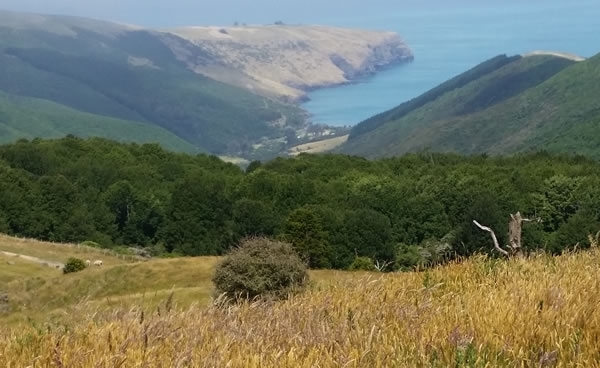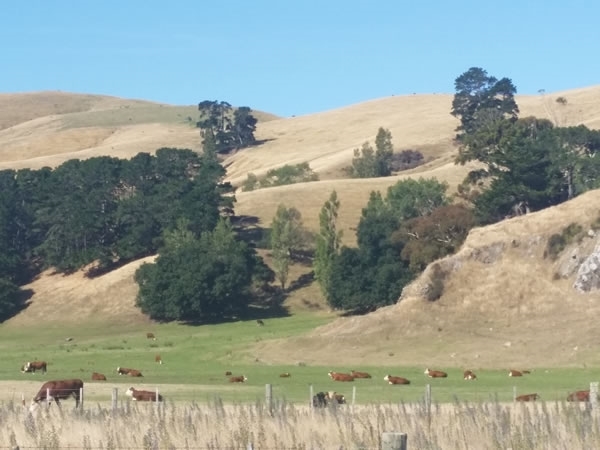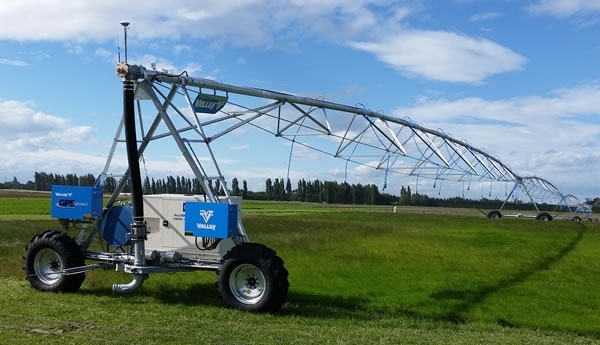
By John Holland, GWCT Head of Farmland Ecology
Over the last couple of months I have been looking into how NZ agriculture has developed over the last few decades, at the impact of the withdrawal of farming subsidies in the mid-1980s and the impact on the environment. Much of this has been new to me, the last time I studied economics was at University decades ago so economists will have to forgive me if my interpretation is rather naïve.
Loss of subsidies
The impact of removing subsidies is sometimes used as an example of what may occur in the UK following Brexit. However, this is a misnomer as the subsidies were not a straight payment per area but instead were designed to increase production.
Subsidies were available at low levels from the 1930s but increased dramatically in the 1970s, partly due to the UK joining the EEC. These provided up to 40% of income at their peak. For example there were tax concessions, fertiliser was subsidised, loans were made available to develop less productive land and payments made to increase stock numbers.
There was also a short period (1983-86) when subsidies were available to support sheep farming, as a payment per head of sheep, but they had insufficient time to capitalise into farm values. The loss of subsidies were, however, only a small change compared to the even greater economic reforms were taking place at the time. NZ was in a financial crisis with government debt at 32% of GDP and they had lost their triple-A credit rating and the new government decided that drastic action was required.
The decision was taken to open up NZ to internal and external market forces which it hoped would lead to increases in efficiency and thus market advantages. To achieve this a raft of dramatic measures were taken including floating of the exchange rate in 1985, removing financial controls, import tariffs and regulations, relaxing market controls, privatising state industries, removing agricultural subsidies and export assistance and devaluing the dollar. As might be expected the impacts of this were far reaching and long lasting, creating hardship for many and not just the farming community.

Why we should not compare the UK and NZ
There are also other fundamental differences between the two countries that should be considered when trying to make parallels with respect to the environmental impact of farming. The first is that natural vegetation of NZ was comprised of forest, swamps and tussocklands and of course no grazing mammals. Secondly, NZ is a relatively new country with respect to agricultural production, with small areas being cultivated by the Maori, but most of the land clearance has occurred in the last 150 years with the arrival of European settlers.
Thus the native wildlife has not had much time to adapt to life in agricultural areas and it holds little attraction for most species. Finally the settlers introduced, on purpose or incidentally, a diverse suite of plants and animals, including some which were considered beneficial such as bumblebees, others to remind them of home (British songbirds), animals for fur or food (rabbits, deer and possums) and when these got out of control some predators (stoats, weasels, ferrets) though fortunately not foxes.
Domesticated animals have also escaped into the bush (pigs, cats and goats) causing havoc to native plants and animals. These species in the absence of competition from the native wildlife were able to proliferate and along with the extensive land clearance has led to devastating declines in so much of New Zealand’s native wildlife.
If only the study of ecology and ecosystems had been around then they might have thought twice about what they were doing. For farmers too, these introduced species are a huge problem, transmitting diseases to livestock, whilst most weeds are non-native in origin. So the outcome of all of this was that native vegetation was regarded as having little value for farming and the agricultural areas and native vegetation have become largely polarised.
This situation is more like that in North America where agriculture areas are intensively farmed and conservation is focussed on National Parks, unlike the UK where the two are intertwined and farming is integral to the landscapes.

Changes in agriculture
In the coupe of decades following the reforms agriculture had a free reign and with an eye to the markets expanded hugely into dairying. From 1992 to 2012 milk production in New Zealand grew by 149%, outstripped only by China which increased by a staggering 616%, whereas in the UK it fell by 6%.
Having a well-structured dairy industry in place by the mid-1980s helped this process, but also co-operatives were strong and many of these merged ultimately leading to the creation of Fronterra in 2002, a farmer-owned co-operative, that now processes 96% of NZs milk, much as dairy ingredients (milk powders) but also as branded products, working with national and international companies across the world. Fronterra has become a global player, having influence on the supply and demand process helping ensure farmgate prices are maintained.
The drive to increase milk production and its productivity has though come at a cost to the environment. Again there are fundamental differences to the UK because cows in NZ are predominantly grass fed, the climate is warm enough to allow them to live outdoors all year around and much of the grassland is irrigated, which thanks to a plentiful supply of water, plentiful sunshine and a good dollop of nitrogen fertiliser provides a consistent supply of grass.
This in itself creates problems because any unused nutrients, faecal matter, urine and pathogens such as E. coli cannot be constrained and are ending up in the ground and surface water. The NZ soils are also quite porous and have a weak structure allowing pollutants to pass through and leads to erosion. The dairying industry is therefore taking a lot of the flak for poor water quality in areas where dairying predominates.
The process to rectify these matters are now underway, following a slow start, with a mixture of regulatory and voluntary measures that includes Farm Environment Plans and the controls on inputs in a similar way to NVZs. Good Management Practices to optimise inputs are also seen as the way forward these being more of a win-win than measures that cost the farmers but give no economic gain.
Other agricultural sectors (wine production, horticulture) have also expanded over the last few decades and farmers being exposed to market forces have had to be innovative to survive, whereas in Europe the subsidies have most likely acted as a buffer.
There have also been improvements in productivity across sectors. For example, NZ now produces the same amount of sheep meat from half the number of sheep compared to 30 years ago. Agriculture also attracts investment in new technologies and research that help drive it forward because this is one of the main primary industries which together contribute 6% of GDP and are responsible for 50% of export earnings. Tourism is catching up though, in 2016 it was the top export earner edging out dairy.
Addressing the environmental issues facing New Zealand agriculture is going to be challenging, not least because working with nature would appear to offer less opportunities than in Europe, whilst the threats from introduced species are also high. Protecting the 100% Pure image is also important but more of this next time.